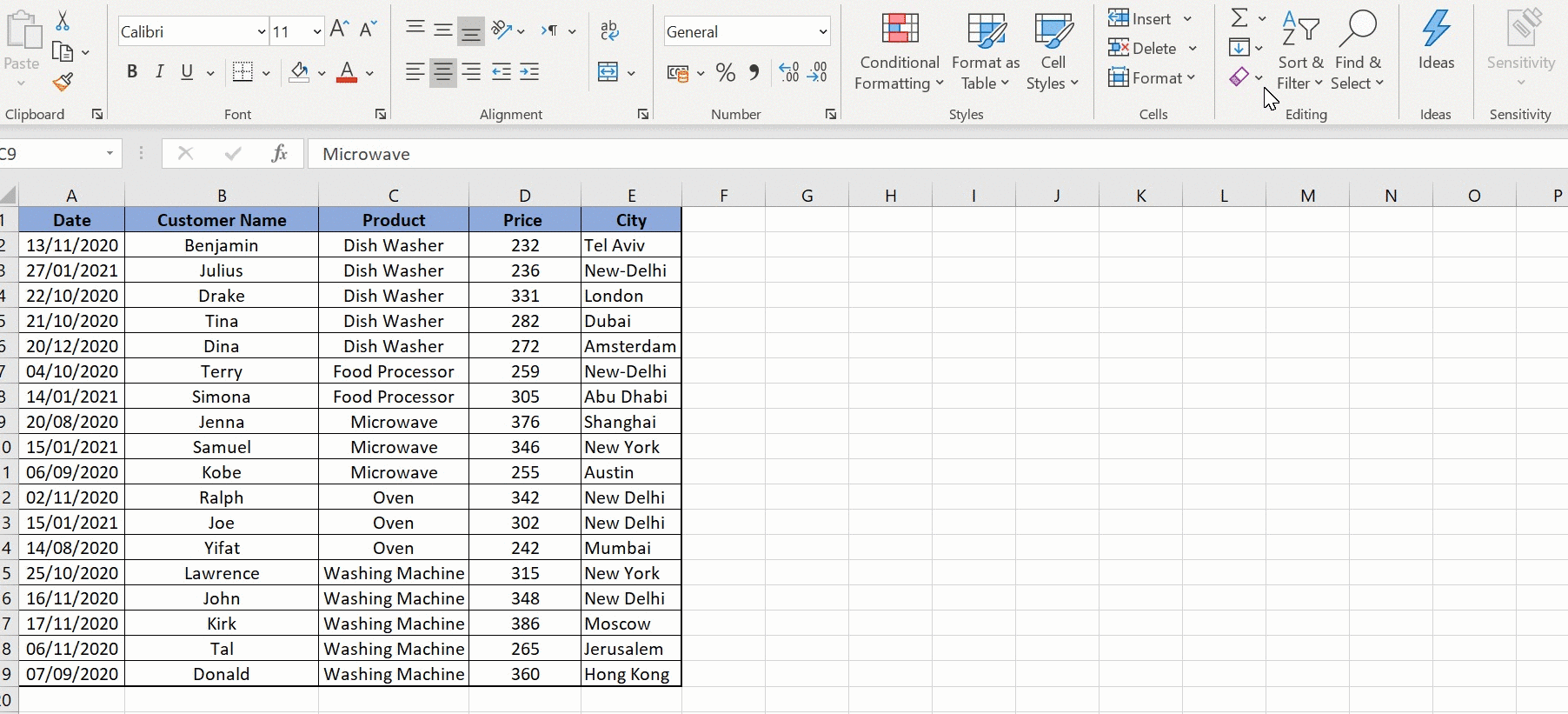5 Ways to Sort Your Entire Excel Sheet Quickly

Managing large datasets in Microsoft Excel can be a daunting task, especially when sorting data efficiently is necessary for quick analysis and reporting. Whether you're handling financial figures, compiling survey results, or managing inventory, knowing how to sort your Excel data swiftly can save time and reduce errors. Here are five effective ways to sort your entire Excel sheet:
1. Using the Sort Function


The most straightforward method for sorting data in Excel is through the built-in Sort feature:
- Select the range of data or the entire worksheet you want to sort.
- Go to the Data tab on the Ribbon.
- Click on Sort & Filter, then select Sort.
- Choose your primary sorting criteria:
- Column: Select which column you want to sort by.
- Sort On: Choose whether to sort by values, cell color, font color, or icon set.
- Order: Specify the sorting order, such as A to Z, Z to A, Largest to Smallest, etc.
- Add additional sorting levels if needed by clicking Add Level.
📌 Note: If your data has headers, ensure the 'My data has headers' box is checked to avoid sorting column names along with the data.
2. Custom Sorting with Macros


For more advanced users or those who need to perform repetitive sorting tasks, creating a macro can streamline the process:
- Open the Visual Basic for Applications (VBA) editor by pressing Alt + F11.
- Insert a new module by right-clicking on any VBA project object, selecting Insert, then Module.
- Enter the VBA code for sorting:
Sub SortData() ActiveSheet.Range(“A1”).CurrentRegion.Sort _ Key1:=ActiveSheet.Range(“B1”), Order1:=xlAscending, _ Header:=xlYes End Sub - Close the VBA editor and run the macro by going to Developer > Macros > selecting SortData, then clicking Run.
💡 Note: Macros require enabling the Developer tab in Excel settings if it's not already visible.
3. Using the Filter Function with Sorting


Filters can also serve as a quick way to sort data while allowing for dynamic data manipulation:
- Select your data range.
- Click Filter under the Data tab.
- Click the arrow in the column header you want to sort by.
- Select Sort A to Z, Sort Z to A, or other sorting options available.
This method is particularly useful when you need to frequently change how the data is sorted or when you want to see only specific parts of the data sorted.
4. Sorting Multiple Columns Simultaneously

| Step | Action |
|---|---|
| 1 | Select your dataset. |
| 2 | Go to Data > Sort. |
| 3 | Choose the first column for sorting. |
| 4 | Click Add Level to add sorting criteria for another column. |

This table approach helps in understanding the sequential steps required to sort multiple columns at once, ensuring each column is sorted in the desired order.
5. External Tools for Complex Sorting

While Excel has robust sorting capabilities, some users might find external tools useful for handling very large or complex datasets:
- SQL Databases: Using SQL queries to sort data in Excel, which can be done through Power Query or by connecting Excel to an SQL database.
- Python: Libraries like Pandas offer powerful data manipulation and sorting capabilities.
- Third-Party Add-Ins: Such as Kutools for Excel or ASAP Utilities, which provide additional sorting functions.
⚙️ Note: External tools might require additional setup and familiarity with the tool's interface or coding language.
To conclude, sorting data in Excel doesn't have to be a time-consuming task. By understanding and utilizing Excel's built-in features, custom macros, or even external tools, you can manage your data sorting needs efficiently. Each method offers different advantages depending on the complexity of your task, your comfort with Excel, or the volume of data you're dealing with. Remember, the key to efficient data sorting is not just about speed but also accuracy and the ability to dynamically interact with your data as your analysis requirements evolve.
What is the difference between sorting with headers and without headers in Excel?

+
When you sort data with headers, Excel recognizes the first row as column labels, which remain in place during sorting. Without headers, Excel assumes the entire column, including the first row, contains sortable data.
Can I undo a sort in Excel?

+
Yes, you can undo a sort by pressing Ctrl + Z right after sorting. However, once you perform another action, the ability to undo might be lost, especially if you close and reopen the file.
How do I sort data with more than one condition?

+
Use the Sort dialog box to add multiple levels of sorting criteria. Click Add Level for each additional sorting condition you want to apply.
Is it possible to sort data based on cell color in Excel?

+
Yes, Excel allows sorting by cell color or font color. In the Sort dialog, choose the column and then select Sort On to specify cell or font color.